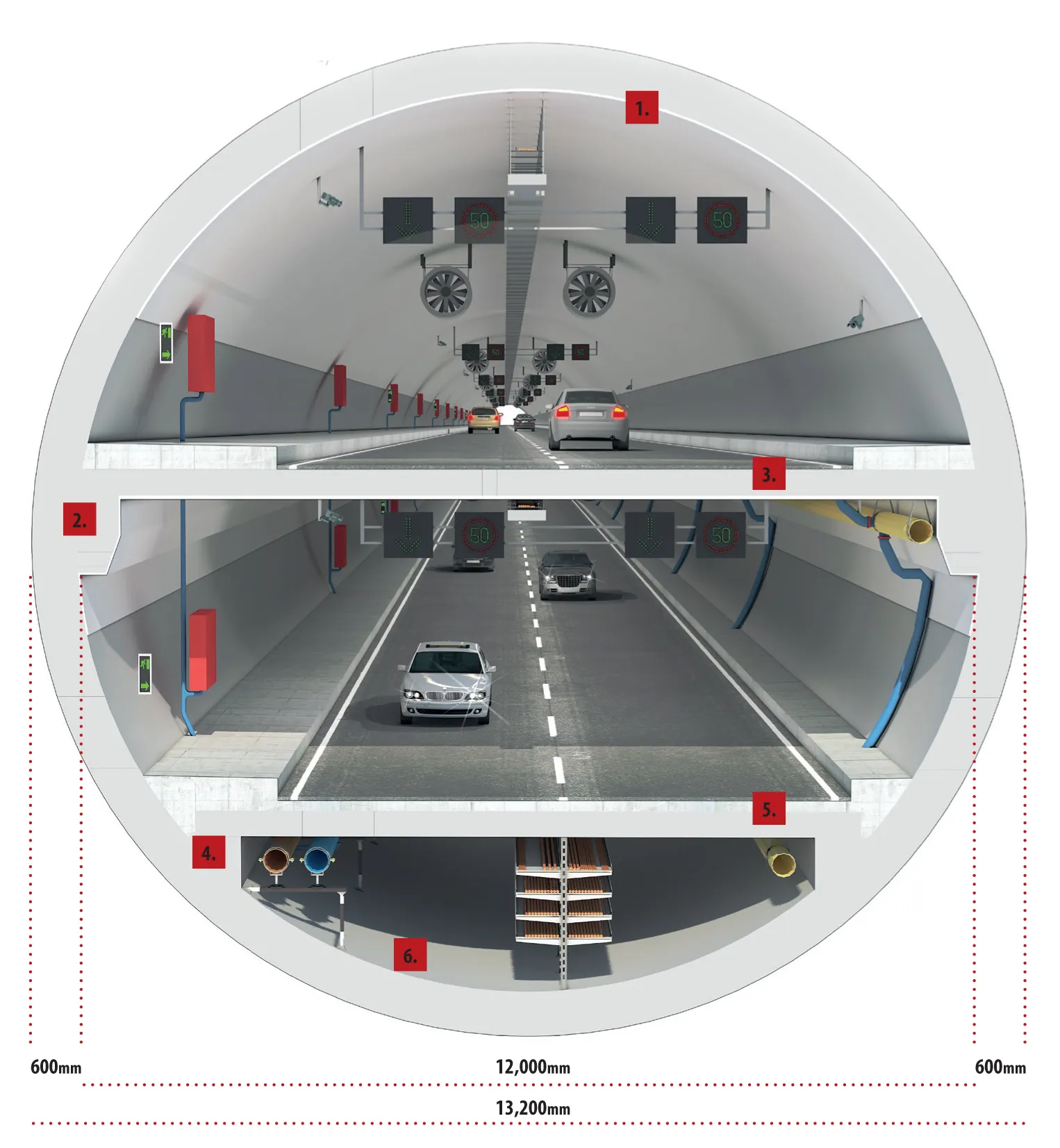Norway looks set to retain its position as a leader in tunnelling with the project moving forward to build a new link connecting the city of Stavanger with Bokn. This 27km road tunnel is being designed to carry four lanes of traffic, which would make it the world’s longest underwater road tunnel. It will also be the world’s longest four lane tunnel as well as the world’s deepest road tunnel, dropping around 385-390m below sea level. The Rogaland Fixed Link will form part of the E39 route, connecting Kristia
September 19, 2016
Read time: 2 mins
Norway looks set to retain its position as a leader in tunnelling with the project moving forward to build a new link connecting the city of Stavanger with Bokn. This 27km road tunnel is being designed to carry four lanes of traffic, which would make it the world’s longest underwater road tunnel. It will also be the world’s longest four lane tunnel as well as the world’s deepest road tunnel, dropping around 385-390m below sea level. The Rogaland Fixed Link will form part of the E39 route, connecting Kristiansand, Stavanger, Haugesund and Bergen in the south of Norway.
Also known as the Rogfast, the tunnel runs from Harestad in Randaberg to Arsvågen in Bokn. In addition to the main tunnel there will additional 4km link to the island of Kvitsøy. Once the tunnel is open, it will shorten the journey time between Stavanger and Norway’s second city, Bergen.
The project forms part of a plan by the Norwegian Government to improve road links in the country and to construct bridges and tunnels so that drivers no longer have to use ferries or take long detours. The project is being planned by Norconsult and the tunnel is expected to cost in the region of €1.5-€1.6 billion to build, with tolls paying back a chunk of the construction costs. The link is expected to open to traffic in 2025 or 2026.
Also known as the Rogfast, the tunnel runs from Harestad in Randaberg to Arsvågen in Bokn. In addition to the main tunnel there will additional 4km link to the island of Kvitsøy. Once the tunnel is open, it will shorten the journey time between Stavanger and Norway’s second city, Bergen.
The project forms part of a plan by the Norwegian Government to improve road links in the country and to construct bridges and tunnels so that drivers no longer have to use ferries or take long detours. The project is being planned by Norconsult and the tunnel is expected to cost in the region of €1.5-€1.6 billion to build, with tolls paying back a chunk of the construction costs. The link is expected to open to traffic in 2025 or 2026.







